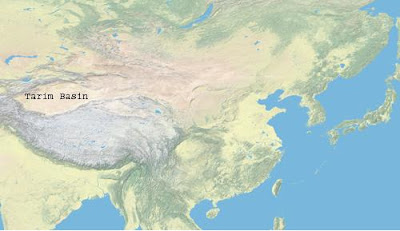Taipei, Beijing, and Washington: the many-sided triangle
Professor Wu Yu-shan, Director and Distinguished Research Fellow, Institute of Political Science, Academia Sinica (Taipei), gave a presentation today titled: "Power Transition in East Asia and Taipei’s Rapprochement with Beijing: Hedging, Pivot-playing, or Bandwagoning?" The presentation focused on explaining one particular theory to illustrate the complicated politics between six major players in East Asia: the PRC, the USSR, Japan, Korea, Taiwan, and the US.
The presentation began by using traditional realist theory to explain how alliances are formed. Using the assumptions of realism, alliances are formed when there is a common threat. A number of logical conclusions follow, such as the stronger the threat is perceived to be, the stronger ultimate alliances may be, and that a change in the balance of power amongst allied powers may weaken or upset an alliance.
The statement Professor Wu made was that a strategic triangle can fit rather nicely between a number of world powers and their relationships, as opposed to the traditional alliance/enemy triangle. The strategic triangle, instead of naming an enemy, can script two powers against each other for the benefit of another nation. It was interesting to see how Professor Wu decided to group particular countries like Japan, Korea, and Taiwan together with common political agendas and relations with various regional powers.
I felt the lecture excluded many interesting key players in Asian politics both during the cold war and today, such as Vietnam and North Korea. It was focused on Taiwan, and definitely touched on many different major political events in the region. How these events were characterized as beneficial for nations or alter the perception of their international status was a very interesting topic discussed by Professor Wu.
Finally, there was a question posed about the nature of Washington’s relations with Beijing and potential apathy of Washington towards Taiwan. Although on the surface it may seem that Taiwan does not play a large role in US policy makers’ decisions about China, there is a “tacet” concern for Taiwan as it seeks to improve its own relations between the two nations.
As a side note, of particular interest to some of the audience members was a graphical depiction of the loss/gains of Taiwan with each subsequent leader over the past two decades. The graph was created by taking a number of domestic and international factors from budget expenditures in the military, market fluctuations, and events to decide how a particular foreign policy affected Taiwan for the better or worse.
The presentation was introduced by Professor Jacques DeLisle, Director of the Center for East Asian Studies, and was given on October 17, 2011 in Meyerson B3 at the University of Pennsylvania.
F. Miller SAS 2013


Comments
Post a Comment
We follow the House Rules as outlined by the BBC here.